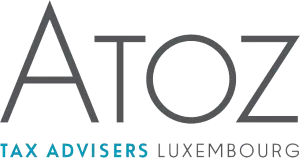Today, the draft law introducing the new Luxembourg BEPS-compliant Intellectual Property (IP) regime was passed by the Parliament. With retroactive effect as from tax year 2018, Luxembourg taxpayers will be able to benefit from an 80% exemption regime applicable to income related to patents and copyrighted software. In addition, IP assets which qualify for the 80% (corporate) income tax exemption will be 100% exempt from net wealth tax.
Which taxpayers can benefit from the new regime?
As the former IP regime, the new regime applies to all Luxembourg taxpayers. This means that the regime is available to both individuals and corporate taxpayers.
Which IP assets are covered by the new regime?
Luxembourg has defined the scope of the new IP regime in accordance with the conclusions reached in the OECD BEPS Action 5 report. Accordingly, the only IP assets that can qualify for tax benefits under an IP regime are patents and other IP assets that are considered as functionally equivalent to patents if those IP assets are both legally protected and subject to similar approval and registration processes, where such processes are relevant.
Therefore, IP rights covered by the new Luxembourg regime are patents defined broadly and copyrighted software. These IP rights fall within the scope of the new regime to the extent that they are not marketing-related IP assets and were created, developed or enhanced after 31 December 2007 (the former IP regime provided the same limitation in time) as a result of research and development (R&D) activities:
(i) Patents defined broadly: inventions protected pursuant to domestic and international provisions in force, by a patent, a utility model, a supplementary protection certificate, a patent extension for paediatric medicines, a plant variety protection title, orphan drug designations; and
(ii) Copyrighted software: software protected by copyright according to the national and international provisions in force.
Marketing assets such as trademarks and domain names are expressly excluded from the scope of qualifying assets.
How is the income receiving tax benefits determined?
The modified nexus approach defined in the BEPS Action 5 report aims to ensure that IP regimes only provide benefits to taxpayers that engage in R&D. The reason is that IP tax regimes aim at encouraging R&D activities. As a consequence, according to the nexus approach, a taxpayer is able to benefit from the IP regime to the extent that it can be demonstrated that the taxpayer incurred expenditures, such as R&D which gave rise to the IP income.
The nexus approach which determines what income may receive tax benefits is as follows:

Accordingly, when a taxpayer has only one single IP asset and incurs all of the expenditures to develop that asset itself, the nexus approach will allow all of the income from that IP asset to qualify for tax benefits.
In order to compute the amount of income which comes within the ambit of the new Luxembourg IP regime, it is necessary to determine:
- which expenditures are considered as "qualifying expenditures incurred to develop IP assets",
- which expenditures are considered as "overall expenditures incurred to develop IP assets" and
- how the net qualifying income from IP asset is computed.
Both the qualifying expenditures incurred to develop IP assets and the overall expenditures incurred to develop IP assets have to be taken into account at the time when they are incurred, no matter the treatment for accounting or tax purposes.
The draft law defines these expenditures as follows:
Qualifying expenditures incurred to develop IP assets are expenditures which are necessary for undertaking R&D activities, directly linked to the creation, the development or the enhancement of a qualifying IP asset and incurred by the taxpayer for undertaking his own R&D activities.
Expenditures which are not directly linked to the qualifying IP assets are not taken into account. It follows that the following expenditures are not considered as qualifying expenditures:
- Interest and other costs for financing the IP assets;
- Real estate costs;
- Acquisition costs; and
- Costs not directly related to a qualifying IP asset.
Expenditures for unrelated-party outsourcing performed through a related party are considered as qualifying expenditures, as long as no margin is realised by the related party on its activity linked to the qualifying IP asset. Qualifying expenditures also include expenditures incurred by a foreign permanent establishment (PE) but allocated to the Luxembourg taxpayer in accordance with a double tax treaty, provided that the foreign PE:
- is located in a State which is party to the Agreement on the European Economic Area;
- is operational when the qualifying IP income is realised; and
- does not benefit from a similar IP regime in the country where it is situated.
Finally, when computing the amount of qualifying expenditures, taxpayers are allowed to apply a 30% "up-lift" (up to the amount of the taxpayer's overall expenditures) to "compensate" for the exclusion of costs incurred by related parties or for the acquisition of IP rights. Hence, the up-lift may increase the amount of IP income that benefits from the new IP regime. The purpose of the up-lift is to ensure that the modified nexus approach does not unfairly penalise taxpayers for acquiring IP or outsourcing R&D activities to related parties.
In light of the above, if the taxpayer conducts all the R&D activities and develops IP on its own, the beneficial percentage will be 100% and all of the income arising from the IP will benefit from the IP regime. If, however, the IP has been entirely acquired from a third entity, through purchase or licensing, the acquisition expenditures (for example, purchase fees or royalties) cannot be included in qualifying expenditures but should be included in overall expenditures. Hence, none of the IP income can qualify for the relevant tax benefit.
Overall expenditures incurred to develop IP assets correspond to the sum of the qualifying expenditures as defined above (but without the 30% lift-up), the costs for the acquisition of the qualifying IP assets as well as the costs for related-party outsourcing.
Adjusted net qualifying income from IP assets corresponds to the net positive difference between:
- The income realised on the qualifying IP assets (the "qualifying income"), i.e. positive income received for the right to use the qualifying IP right; income directly linked to the qualifying IP asset and incorporated in the sale price of a product or service; income realised on the disposal of such IP rights and the indemnity received in relation to the qualifying IP asset following a judicial proceeding or an arbitration procedure; and
- The overall expenditures and the expenditures incurred during the financial year which are indirectly related to a qualifying IP asset. The draft law also provides for adjustment and offset of the net qualifying income. The purpose of such adjustment is to ensure that the net qualifying income incurred by a qualifying IP asset during a financial year only benefits from a partial IP exemption provided that the overall net qualifying income exceeds the operating expenses (i.e. direct and indirect expenses in connection with the asset). The offset is applicable when the taxpayer holds more than one qualifying IP asset. In that case, the positive adjusted net qualifying income generated by the qualifying IP asset shall be offset against the negative adjusted income of any other qualifying IP asset. The positive net qualifying income after such adjustment and offset shall benefit from the partial exemption.
How is income receiving tax benefits treated under the new regime?
Under the new regime, for individuals, the income receiving tax benefits, as computed above, will benefit from an 80% exemption; the effective taxation of the IP income will depend on the amount of income realised by the individual, due to the fact that the Luxembourg income tax rate is progressive and ranges between 0 and 42% (plus a solidarity surcharge).
As far as companies are concerned, the income receiving tax benefits will benefit from a corporate income tax (CIT) exemption. Since the taxable basis for municipal business tax (MBT) purposes is the same as the CIT basis, the 80% exemption will apply for both CIT and MBT purposes. Taking into account the CIT rate currently applicable and the additional MBT charge, the effective corporate tax rate applicable to the income receiving tax benefits will be 26.01 * 20% = 5.20%.
How are qualifying IP assets treated for net wealth tax purposes under the new regime?
IP rights qualifying for the new IP regime will benefit from a 100% net wealth tax (NWT) exemption.
Next steps and implications
The draft law will become law following its publication in the Luxembourg Official Gazette (Memorial) and will apply retroactively as from tax year 2018.
The introduction of a new IP regime is positive for both Luxembourg taxpayers and for Luxembourg itself as the regime should attract new R&D activity to Luxembourg and strengthen existing IP management and development activities. While IP regimes implemented by countries participating in the BEPS project will become more and more similar, given that these regimes have to comply with the modified nexus approach, it was important that Luxembourg make the right choices, exhausting all options provided in the Final Report on Action 5. The Luxembourg legislator decided, in particular, to adopt the optional 30% up-lift on qualifying expenses. Moreover, even IP income that is embedded in the sales price of products or services may benefit from the IP regime.
Lastly, we would like to emphasise that taxpayers which benefited from the former IP regime before it was repealed (as of 30 June 2016) and which hold IP assets that no longer qualify under the new regime (e.g. trademarks) can still benefit from the former partial exemption regime on income and capital gains realised during a grand-fathering period which will end on 30 June 2021.
The content of this article is intended to provide a general guide to the subject matter. Specialist advice should be sought about your specific circumstances.



